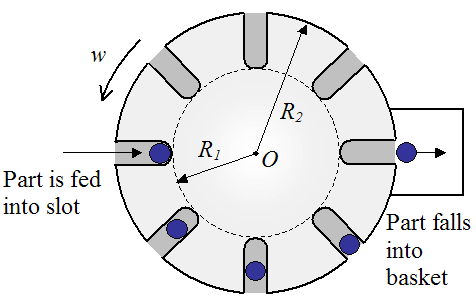Acceleration Problems
On this page I put together a collection of acceleration problems to help you understand acceleration better. The required equations and background reading to solve these problems is given on the kinematics page.Problem # 1
A particle is moving in a straight line with a velocity given by 5t2, where t is time. Find an expression for the acceleration of the particle. (Answer: 10t)
Problem # 2
A particle travels in a straight line a distance of 2 m in a time of 0.01 seconds. It is known that the particle accelerates from rest with constant acceleration. What is the acceleration of the particle? (Answer: 40000 m/s2)
Problem # 3
A car goes around a turn of radius 30 meters at a constant speed of 50 km/h. What is the acceleration of the car? (Answer: 6.43 m/s2)
Problem # 4
A car accelerates uniformly in a straight line from 10 m/s to 20 m/s in 5 seconds. What is the acceleration? (Answer: 2 m/s2)
Problem # 5
At a given instant, a car goes around a turn of radius 30 meters with a speed of 50 km/h and an acceleration of 2 m/s2 along the turn. What is the acceleration of the car? (Answer: 6.73 m/s2)
Problem # 6
Using Newton's Law of Gravitational Attraction, calculate the gravitational acceleration of an object dropped from an altitude of 500 km above the earth's surface. Use an earth radius of 6400 km. (Answer: 8.37 m/s2)
Problem # 7
A disk of diameter 15 cm is spinning at 3000 RPM. What is the acceleration of a point on the outside edge of the disk? (Answer: 7402 m/s2)
Problem # 8

A horizontal turntable at an industrial plant is continuously fed parts into a slot (shown on the left). It then drops these parts into a basket (shown on the right). The turntable is rotating with a constant angular velocity w. There is negligible friction between the parts and slots. The parts exit the slots with a radial velocity Ve relative to the turntable. What is the acceleration of the parts at radius R1 and R2?
Hint and answer
The parts experience no radial acceleration because there is no force in the radial direction acting on the parts as they slide outward. There is no force because: 1) The turntable is horizontal and there is no gravity component in the radial direction, and 2) There is no friction between the parts and slots. Hence, the parts experience only Coriolis acceleration, perpendicular to the radial direction. Coriolis acceleration is given by 2Vrw, where Vr is the relative radial velocity. At radius R1, Vr = 0 since the parts are just beginning to slide. Therefore, the acceleration is zero at radius R1. At radius R2, Vr = Ve and the acceleration is 2Vew.
Return to Kinematics page
Return to Real World Physics Problems home page
Free Newsletter
Subscribe to my free newsletter below. In it I explore physics ideas that seem like science fiction but could become reality in the distant future. I develop these ideas with the help of AI. I will send it out a few times a month.